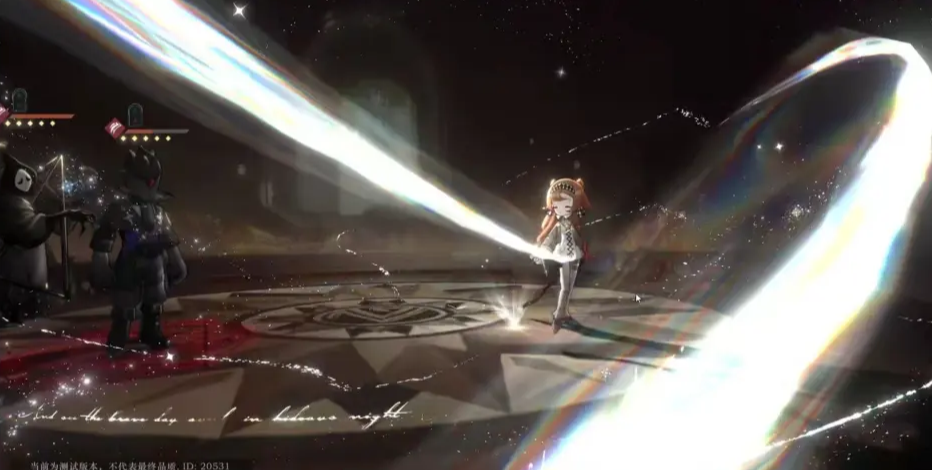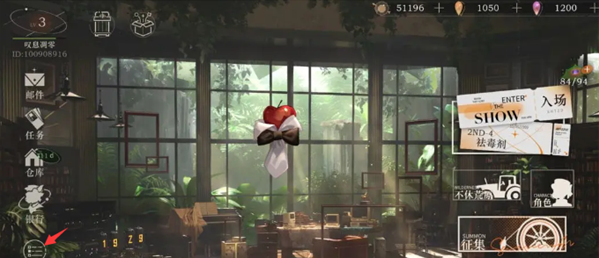Back to the future 1999 poster girl cast list, let you have a very in-depth understanding of the poster girl in Back to the future 1999.
For the poster girl in Back to the Future 1999, the first default poster girl is the sonnet. Sonnet's status is equivalent to Amiya from Arknights, and she is the character with the most PV appearances abroad. After that, players can switch the poster girls themselves, and the method of switching the poster girls will be attached later.

Sonnet, rock attribute, realistic trauma character, role tags: control, strengthen our side, weaken the enemy.
May peace be with us. "
A member of the St. Love Foundation, a serious literature girl.
He studied at the First Line of Defense School with Vertin when he was young, and currently works together as Vertin's assistant.
He has an excellent memory, but seems to lack common sense.
In terms of the panel, Sonnet's HP rating is A, ranking seventh in the game, and her attack power rating is B⁺, ranking tenth from the bottom in the game. As for the specific data, relatively speaking, this panel does comply with Sonnet's character label && control, but Sonnet, as the initial character, has many and complex abilities. In some aspects, this panel can only be Just make do with it.
Occult:
The first card&& commandment number five
Single target attack, causing 200% real-life trauma. When the card is combined to two stars, the target will be in the "disarmed" state for one round. When the card is combined to three stars, the real-life trauma multiplier will be increased to 300%, and the additional "disarmed" state on the target will be extended to two rounds. . (Disarm: Unable to use Attack card)

The first card of Sonnet is very suitable for the control characteristics of your game. Whether it is Mistletoe, Sonnet or Winter, they have almost the same card combining effect and multiplier, only the control effect caused is different. In actual combat, the effect of this card is very good. After all, most monster cards have the "Attack" tag. Comparing Mistletoe and Winter, Mistletoe's "Petrification" targets the character's actions. Once petrified, you cannot use any Cards or combination cards, Dong can freeze the enemy's "buff", "debuff", and "counter" cards, while Sonnet focuses on blocking the enemy's damage cards. When the enemy only has "Attack" cards in a battle, The control of the sonnet is not weak. And from the perspective of the range of control, her disarm "has a wide range of application, most mobs have attack" type skill cards. From the perspective of the control frequency, the small skills produced by combining two cards can be cast very frequently, and the targets are also It’s very flexible and faster than the controls of the final ritual type.” In this case, you need to decide whether to go into battle based on the effects of the character’s other cards and the final ritual, as well as the combination of teammates.
The second card && exhortation nine
Group buff increases the attack power of all allies by 15% and lasts for two rounds. When the card reaches two stars, the attack increase rate becomes 20%. When the card reaches three stars, the attack increase rate becomes 25%.

This card looks very similar to Mistletoe's Dew Turning White and Winter's Paper in form, but this card is often more powerful than Dew Turning White and Paper. Currently, Sonnet is the only character in the game that can directly increase the attack power of teammates. She can greatly increase the output of the entire team, adapt to any type of teammates, and even give some defensive teams the ability to end the battle. "Mistletoe's Whitening Dew" and "Winter's Paper" both reduce damage to teammates, build a solid front, and increase the team's fault tolerance rate. They are indispensable in high-difficulty books, but their effect on output is not that great. Obviously, although the defensive team has a large increase, it still cannot change the fact that the team can only slowly consume the enemy. Most of the time, offense is the best defense.

The ultimate ritual&& chant outside the rules

A group attack, causing 350% real-life trauma, and reducing the target's real-life defense and mental defense by 20%, lasting for three rounds. Shaping increases the debuff effect and multiplier. When fully shaped, the double defense of all enemies is reduced by 35%, and the damage multiplier is increased to 500%.

The final ritual of the Sonnet has the same ultimate purpose as the ninth exhortation - to increase one's own output. However, the final ritual acts on the enemy, which can avoid the embarrassing situation of one's own buff being dispelled. The multiplier is 500%. Compared with characters such as Mistletoe, the multiplier is not very generous, but with the debuff blessing, this multiplier can be seen as just a fly in the ointment. In actual combat, the three-round defense-breaking and attack power-increasing buff capabilities can be frequently added. Forming the effect of 1+1>2”.
Inherit &&Look for in poetry
Insight I: When in the "Buff" state, gain a 15% trauma bonus, and attack ignores 15% of the target's defense.
Insight II: When entering combat, real defense and mental defense +10%
Insight III: When in the "Buff" state, the explosion resistance rate and critical hit defense are increased by 20% and 20%, respectively.

Sonnet's insights are a bit different. Insight 1 brings stronger output capabilities to Sonnet, while insights 2 and 3 focus on improving her survivability. The amount of improvement is quite a lot, but it makes the game in-game The positioning of the sonnets is even more confusing.
Suggestions for use:
The first and third paragraphs of "Sonnet's inheritance" can only be triggered when "it has a buff", so even if you don't draw two at the beginning, it is best to play it when there is only one to ensure that the buff is covered throughout the process (if you don't draw two ? Change a deck of cards). As for the first card, "Commandment 5", it is best to combine the cards to two stars or above before using them. If you cannot synthesize them, it is recommended to hoard them first. It is also best to play the final ritual quickly at the beginning, as long as there are enough action opportunities. It can ensure that the opponent is debuffed throughout the whole process, plus the buff of "Encouragement", which brings a high damage bonus to the output character. However, the action opportunities of the output character must be balanced, otherwise Sonnet will be exhausted. What is the purpose of adding ground buff?
Character tag && control, strengthen our side, weaken the enemy:
Sonnet's control ability is not her highlight, but it is the icing on the cake. In actual combat, it is not comparable to strong control, but she can handle it in most situations with ease. Her most eye-catching thing is her second card - which increases the attack power of the whole team, plus the inheritance and ritual debuffs of Insight One, and the 500% multiplier when fully formed, which can be regarded as half a deputy C to a certain extent. . However, given that Sonnet's attack power panel is relatively low, let's let our Sonnet focus on Abduction with peace of mind.

Extraction suggestions:
As the poster girl and the initial character, Sonnet does not need to be specially extracted. The shaping can mainly slightly increase the debuff effect and multiplier of her ritual. Sonnet's current characteristics are rare, but it will be highly replaceable in the future. If the box depth is high, it can be cultivated as a Buddhist type. But after all, Sonnet is the initial character and has relatively comprehensive abilities. Her importance in the pioneering period is self-evident. It is still recommended that novices invest resources in cultivating Sonnet.
Teammate combination:
When used as a turn, it can be paired with any type of teammates, and the main C and secondary C will be greatly improved. Special reminder: When Xia Li has a buff, the damage of the first card is increased. Marilyn, Little Spring Queer, and East of Berlin increase the damage of the first or second card when the enemy has a debuff. These characters can work well with Ten Four lines to match. When used as a control, it is recommended to play together with other controls. After all, although Miss Sonnet is currently the strongest disarming controller, Sonnet's own disarming effect is not strong. The specific person who goes into battle depends on the situation. For example, when you need to disarm, you can use the main controller (Star Eye's disarm is relatively weak, so you can use it when you need to taunt the character). If you need mixed control, you can choose Dong and X, etc.
The original sign wasn’t even a person, it was an apple.

After the launch, several new characters were released:
These characters are Eric, Winifred, Wu Yuese, and John Tito . The first is Eric. The setting of this character is quite interesting. She is a Viking warrior with star attributes. The fragrance is woody. She wears a Viking-style hood and holds an ax in her hand. Blonde girl.
The second character, Winnifred, has a rock attribute and her fragrance is aquatic, such as basil and fresh water. She is a beautiful girl with long white hair and golden eyes wearing a blue dress.
The third one is Maye Se, Maye Se is a girl with short brown hair, wearing a Japanese apron and handcuffs on her hands. Her fragrance is currently unknown, and her attributes are also unknown.
The fourth and last new character, John Tito, is as unclear about her attributes and fragrance notes as May Se. We only know that she is a girl with short hair, glasses, and a loyal computer in her hand.

Next is the method to switch the kanban girl:
1. First enter the game. You can see many taskbars on the left side of the main game page. At the bottom of the taskbar, that is, in the lower left corner, you can see a [Menu] button with a small circle inside. There are some horizontal lines, click to enter;


After entering, you can see settings, illustrations, peripherals and other functions on the left. On the right is the current board character drawing and signature. There is a [Change] button next to the signature, which is a rotating icon. Click to change the character you want. The signboard needs to be replaced.

Video guide:
The above is the introduction of the Back to the Future 1999 poster girls. More Back to the Future 1999 strategies are available in Knight Assistant!